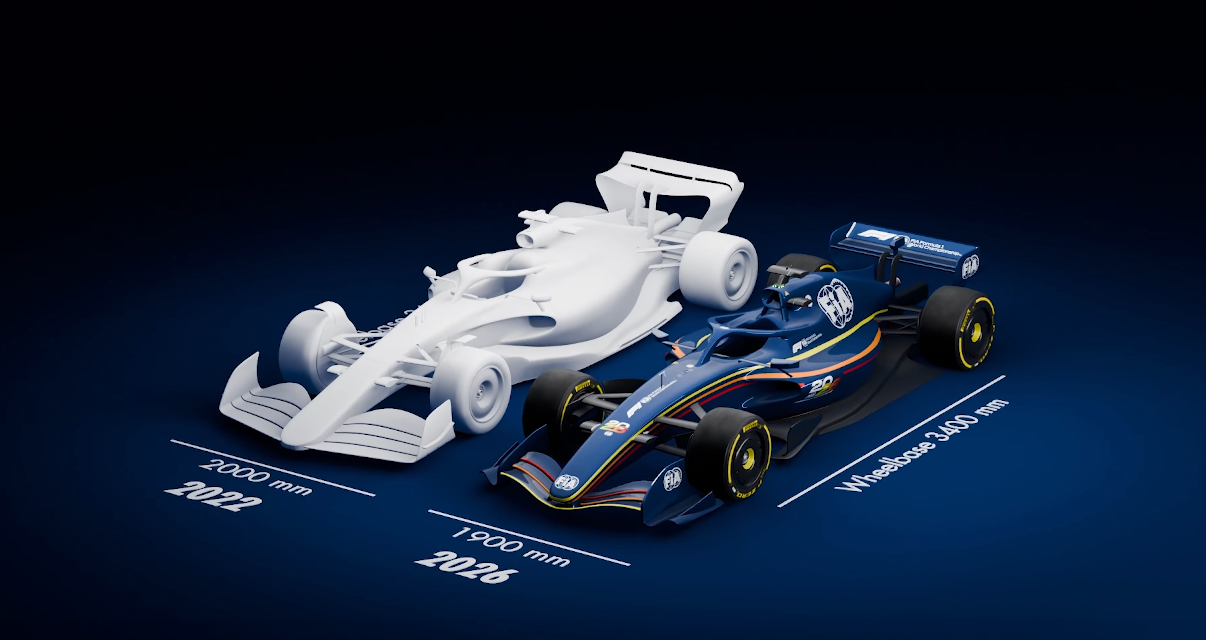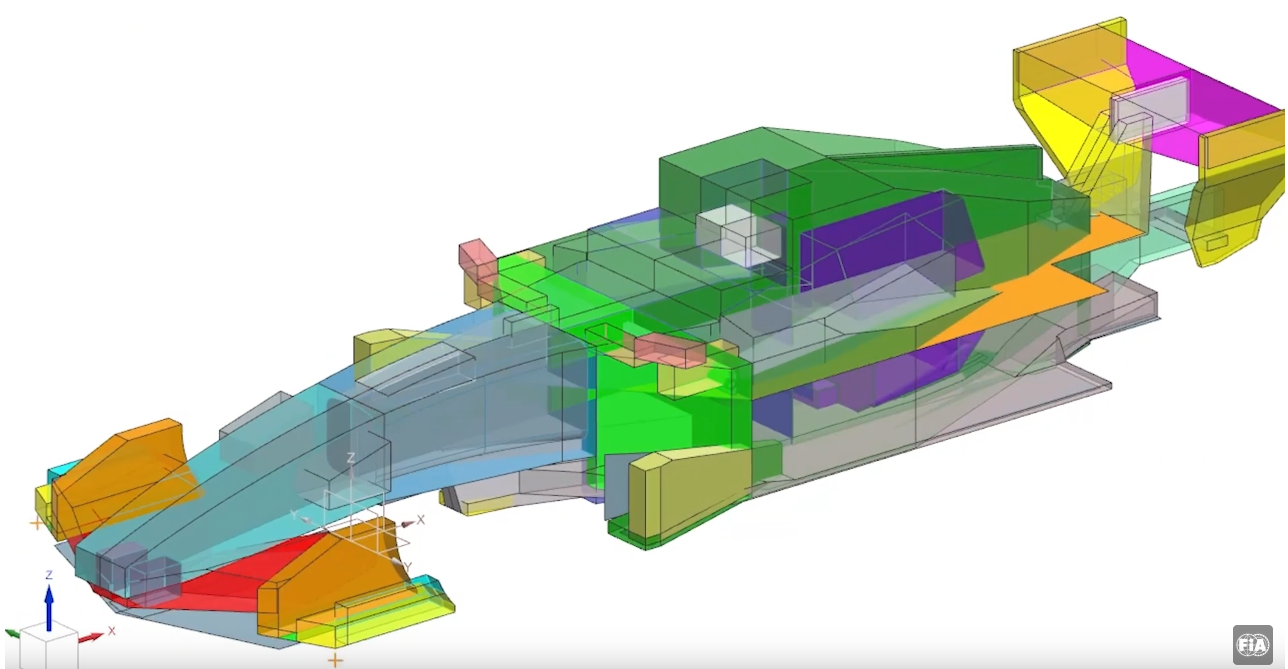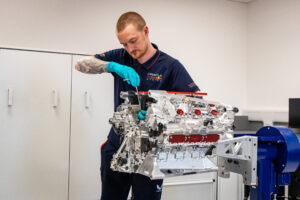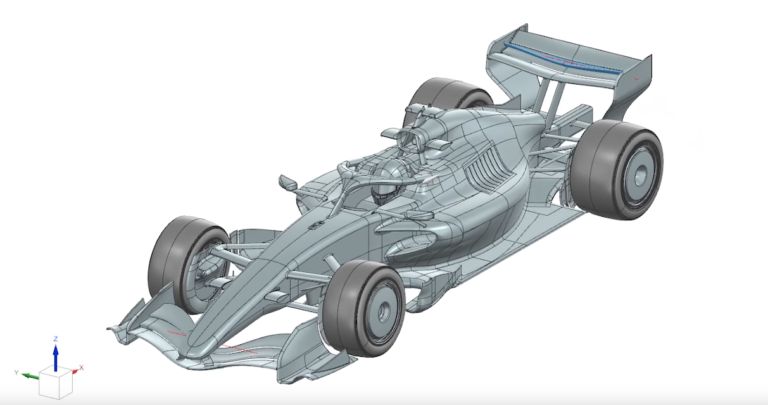The FIA has revealed fresh details of the 2026 Formula 1 regulations. The rules hinge around a completely revamped aerodynamic concept, intended to complement the also-revised power unit regulations, and smaller dimensions aimed at improving racing and creating more “nimble” cars.
The standout detail of the new rule set is that it appears to do away with the current underfloor tunnels, returning to a flat bottom concept coupled with a relatively short rear diffuser. The cars will also feature a dual drag reduction system, operating on both the front and rear wings. FIA single seat technical director Jan Monchaux explained, “Decisions were made a year or so ago, to go for what is called a nimble car, so slightly smaller, less downforce, but with a big focus on less drag.”
The maximum width of the cars will be set at 1,900mm, down from 2,000mm, while the permitted wheelbase will be cut from 3,600mm to 3,400mm. The weight will also be dropped by 30kg from the current 798kg minimum.
Overtaking focus
Much of the focus of the current rules is on underbody downforce generation, to help reduce the dirty air behind cars and the related drop off in downforce generation for a following car. The evidence shows that this has been effective, though the efforts of teams’ aerodynamicists has blunted its impact somewhat.
According to Jason Somerville, head of aerodynamics at the FIA, this is still a key consideration: “The main goals of the 2026 aero rules is really to kind of focus on reestablishing the following car performance. We really want great racing. We want to ensure that the cars can race closely. It’s an opportunity for us to reset the baseline level of the cars so they can race together, but also to make sure that the aerodynamics packages is closely working with the power unit.”
On this second point, while the overall constrains of the aero rules, coupled with the reduced area available for aerodynamic devices due to the smaller dimensions, will help make up for the tighter energy constraints on the power unit, the use of two drag reduction devices will also be vital. With ICE power pegged at around 400kW and electrical power upped to 350kW, low drag will be vital to make sure the concept is workable. 
“Clearly, the power unit has different characteristics with a greater electrical component, and that means that as the heart of the car, we really need to make sure that the aerodynamics complement that power unit. If you were to drop the 2026 power unit into a current car, the drag level, the energy required to pull the car through the air, is quite high, and that really wouldn’t be very well aligned with the characteristics of the power unit,” explained Somerville.
Earlier rules iterations, with only rear wing drag reduction, came in for criticism from drivers who had run these configurations in the simulator, as the change in aero balance when the DRS was deployed was deemed unmanageable. To combat this, the top two elements of the (three element) rear wing will be movable, as will the two front wing elements, achieving a more balanced switch from high- to low-drag configurations.
 However, DRS will now not solely be an overtaking tool, available on all straights to all drivers. Instead, the ERS will be used to provide a push-to-pass function. “We are going to allow to the car behind to deploy more electrical energy for a given portion of time during a lap,” said Monchaux.
However, DRS will now not solely be an overtaking tool, available on all straights to all drivers. Instead, the ERS will be used to provide a push-to-pass function. “We are going to allow to the car behind to deploy more electrical energy for a given portion of time during a lap,” said Monchaux.
Details of the power unit regulations had already been revealed, with the main takeaways being the loss of the MGU-H and lower fuel flow limits and the rollout of a 100% sustainable synthetic fuel.



